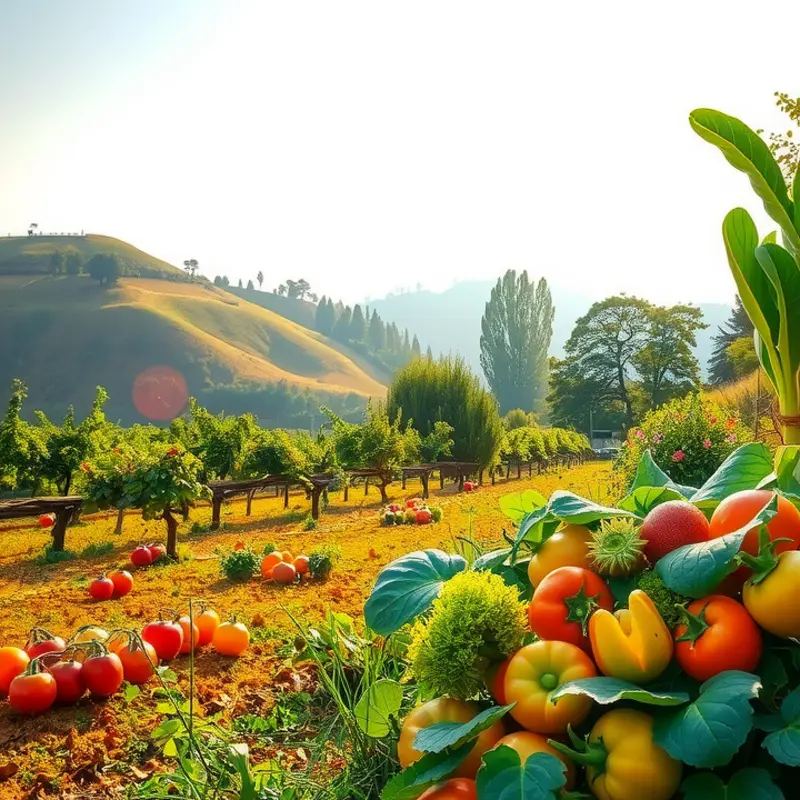As the eco-conscious movement grows, the demand for sustainable food storage solutions is more important than ever. Conventional food storage options can contribute significantly to environmental waste, particularly plastics that end up in landfills and oceans. By making the switch to eco-friendly alternatives, individuals can significantly reduce their carbon footprint while maintaining their food’s freshness. From reusable bags to biodegradable containers, a variety of options are available to support a sustainable lifestyle. Embracing these solutions not only benefits the planet but also enhances the experience of preparing and enjoying food.
Shifting from Plastic: Eco-Conscious Alternatives

The detrimental effects of single-use plastics on our environment are well-documented, prompting many to seek sustainable substitutes. A cornerstone of this shift is embracing materials like glass, stainless steel, beeswax wraps, and silicone bags as environmentally-friendly food storage options. These alternatives not only keep our food fresh but also significantly reduce our reliance on plastics, thereby fostering a circular economy.
Glass containers are a popular choice for eco-conscious individuals. They are durable, non-toxic, and maintain food quality without leaching chemicals. Transparent, they allow for easy identification of contents, reducing food waste. Although heavier than plastic, the investment in glass containers offers long-term benefits both for your health and the planet.
Stainless steel food containers are equally innovative. Known for their longevity and recyclability, stainless steel is a smart choice for those seeking durable, lightweight storage options. Unlike plastic, stainless steel won’t absorb flavors or stains, ensuring your food’s integrity is uncompromised. They are especially handy for storing perishable items like lunch snacks or outdoor meal ingredients.
For those focused on reducing waste, beeswax wraps are a striking alternative to plastic wrap. Made from organic cotton infused with beeswax, these wraps are flexible and reusable, creating an airtight seal that keeps food fresh. They are perfect for covering bowls or wrapping produce, cheese, and bread. Simply wash with cold water and mild soap, and they’re ready for reuse.
Silicone bags have gained popularity due to their versatility. These bags are heat-resistant, making them ideal for freezing or even cooking. Unlike traditional plastic bags, they are less prone to tearing and can be reused endlessly, vastly reducing disposable waste.
Integrating these materials into daily life requires a mindset shift and practical actions. Begin by replacing a few commonly used items, such as sandwich bags or cling film, with a sustainable alternative. Encourage household members to participate in this transition, ensuring everyone feels comfortable with the changes.
For those interested in diving deeper into eco-friendly practices, visit this eco-smart kitchen storage guide for additional tips on sustainable storage in your kitchen.
The journey towards an eco-friendly kitchen is facilitated by education and gradual change. By choosing sustainable materials and educating ourselves on their benefits, we make a substantial impact not just individually, but also collectively in preserving our planet.
Maximizing Freshness: Strategies for Eco-Friendly Food Storage

Maximizing the freshness of food with eco-friendly storage solutions not only preserves flavor but also reinforces our commitment to sustainability. An organized fridge serves as the foundation for maintaining food quality. Designate areas for different food types, ensuring airflow between items. Keep fruits and vegetables in separate drawers since certain fruits emit ethylene gas that can spoil vegetables prematurely.
Reusable containers are essential for meal preparation, allowing you to store and preserve dishes without excess waste. Consider glass or stainless steel options that are long-lasting and reduce dependency on single-use plastics. For those keen on extending freshness further, vacuum sealing can prove beneficial by eliminating air, which slows down degradation. Similarly, freezing is a powerful ally in prevention of spoilage. When freezing, use eco-friendly wraps to avoid freezer burn and label contents for easy identification.
Maintenance of these eco-friendly products is crucial to ensure their longevity. Regularly clean your containers and vacuum sealers according to the manufacturer’s instructions, using natural cleaning agents like vinegar or baking soda. This gentle care can extend their lifespan and efficacy, reducing the need for replacements.
Incorporate seasonal eating to enhance food freshness and sustainability. Seasonal produce not only tastes better but travels fewer miles, reducing carbon footprints. Meal planning further complements this by cutting down on unnecessary purchases, thus minimizing waste. By aligning storage with meal planning, leftover management becomes more effective, echoing the principles of mindful eating seen here.
Thoughtful storage transforms our culinary experiences by preserving the integrity of flavors while reinforcing a sustainable lifestyle. By selecting and maintaining the right eco-friendly tools and techniques, we enjoy fresher meals and actively reduce our environmental impact.
Final words
Choosing eco-friendly food storage solutions is a crucial step in reducing our environmental impact and supporting a sustainable future. By opting for alternatives to plastic, such as glass containers, beeswax wraps, and reusable silicone bags, individuals can make a difference in combating pollution and waste. Implementing effective food storage strategies further ensures that we maximize the shelf life of our groceries while minimizing waste. The path towards sustainability is increasingly accessible, and every small choice counts. By making conscious decisions in our food storage habits, we not only enhance our culinary experiences but also contribute to a healthier planet for future generations.








